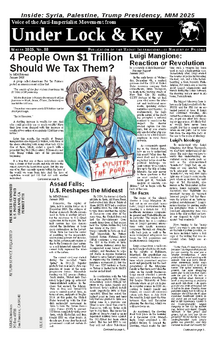Got legal skills? Help out with writing letters to appeal censorship of MIM Distributors by prison staff. help out
ALERTS
- WARNING: FBI tracks our visitors
- Sep 12: Follow us on Mastodon
MIM(Prisons) is a cell of revolutionaries serving the oppressed masses inside U.$. prisons, guided by the communist ideology of Marxism-Leninism-Maoism.
[About Us]
Campaigns
- We Demand Our Grievances are Addressed! (2/12/2025)
- We Demand Our Grievances are Addressed in Pennsylvania (2/10/2025)
- We Demand Our Grievances are Addressed in North Carolina (2/10/2025)
- We Demand our Grievances are Addressed in Arkansas (1/22/2025)
- Reject the I$raeli Settler State, Support the People of Palestine (1/06/2025)
Recent Posts
- Private Legal Mail Opened & Scanned by Arkansas & Feds
- Digital Mail: An Ineffective Mess
- Utah: Arbitrary Isolation, Digital Mail, and Lack of Accountability
- A Timeline History of the Black Panther Party & Black Liberation Army
- Mass Punishment: War Crime for Most, Standard Practice for the U.$. and I$rael
Censorship
- Charlotte Correctional Institution in FL (2/16/25)
- Charlotte Correctional Institution in FL (2/15/25)
- GEO Bay Correctional Facility in FL (2/15/25)
- State Correctional Institution Forest in PA (2/14/25)
- State Correctional Institution Forest in PA (2/14/25)















ERROR: Invalid URL, return to news